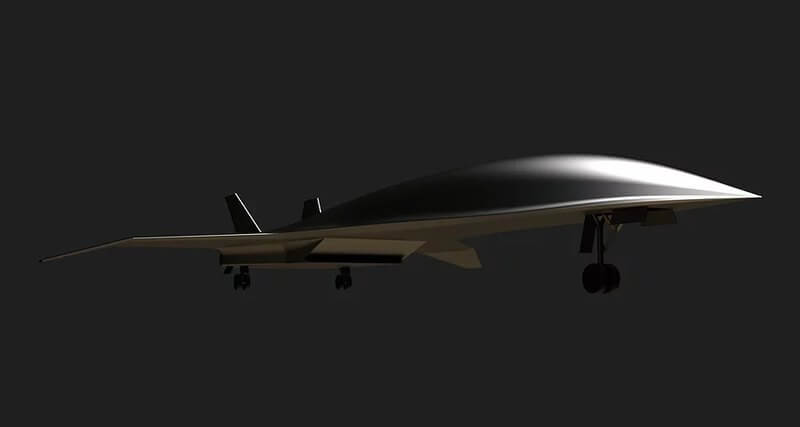In the US, develop a plane on which you can fly from New York to London for 90 minutes
The American startup is developing an aircraft that will fly at a speed five times faster than the speed of sound and carry passengers between New York and London in 90 minutes or less.

Photo: Hermeus Corp.
Atlanta-based aerospace company Hermeus Corporation said it has received funding from sponsors and private investors to develop a plane that will fly at Mach 5 speeds - five times faster than the speed of sound of the Mach 1.
If the project is successful, it will be a revolution in commercial transatlantic flights. Currently, the flight between London and New York takes more than seven hours.
On the subject: Passenger aircraft accidentally exceeded the speed of sound
The creators hope that the aircraft will be able to reach speeds of 4600 miles (7 402 km) at cruising speeds 3300 miles (5 310 km) per hour.
“We embarked on a project to revolutionize global transportation infrastructure from the dial-up equivalent of the broadband era, radically increasing the speed of travel over long distances,” says AJ Piplica, Hermeus co-founder and CEO, according to the company's website.
The founders of Hermeus are former employees of SpaceX, startup Elon Musk, and Blue Origin, Jeff Bezos's secret space enterprise. All four founders worked on the creation of a hypersonic rocket plane and the newest X-Plane of the USAF.
On the subject: 23 tricks to help save time and money at airports
Paul Bruce, a senior lecturer in the aeronautics department at Imperial College London, expressed his wariness.
“The biggest challenge for hypersonic flight is propulsion,” he said. “We sent small vehicles and controlled them hypersonically using rocket engines. This is quite an experimental project and we have a long way to go before we see them on a passenger aircraft."
“The bigger problem is financial and perhaps environmental: such a fast flight will burn a lot of fuel and be much more inefficient than a slow one. But if there is demand, then I have no doubt that we will build one of these aircraft,” he added.
On the subject: 40 Air Travel secrets from experienced travelers
Hermeus co-founder and CEO AJ Piplika told CNN that it would take a decade to develop a passenger plane.
Hermeus Corporation is not the first to decide on a hypersonic journey. In June, Boeing 2018 announced plans for a hypersonic passenger aircraft. Lockheed Martin and Aerion Corporation are also working on a hypersonic aircraft.
If successful, the Hermeus aircraft will be twice as fast as the Concorde, the supersonic aircraft that made the last transatlantic flight in October 2003 of the year. Then the flight between New York and London took less than four hours.
Read also on ForumDaily:
How to buy a ticket for a cruise and fly to the port of departure for free
Why are there so many older flight attendants on American airlines?
10 airports in the US, where it is dangerous to use Wi-Fi
Subscribe to ForumDaily on Google NewsDo you want more important and interesting news about life in the USA and immigration to America? — support us donate! Also subscribe to our page Facebook. Select the “Priority in display” option and read us first. Also, don't forget to subscribe to our РєР ° РЅР ° Р »РІ Telegram and Instagram- there is a lot of interesting things there. And join thousands of readers ForumDaily New York — there you will find a lot of interesting and positive information about life in the metropolis.











